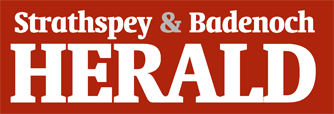Is Highland Council finally getting serious about attainment by declaring ‘learning and teaching’ as a priority and hiring quality improvement managers?
Dire attainment in north schools appears to have finally provoked a major change away from Highland Council’s “business as usual” mantra.
A raft of new measures have been unveiled in a bid to lift the region’s educational record up national league tables, where it has been languishing near the foot since before the pandemic.
We have followed education developments closely since a former head of education sought to place the responsibility for attainment results on primary teachers.
The situation was made worse when some administration councillors proved resistant to admit there was even an issue with attainment to address.
While the changes will be welcome for many, they show how far education has fallen by the fact that “learning and teaching” is now listed as a “strategic priority”.
The local authority is also looking to heal self-inflicted wounds through a major £2.3 million restructuring of the service that will be invested in new staff positions.
Eight new area quality improvement managers will work on improvement plans for each school – similar roles were removed by the previous regime under ex-chief executive Donna Manson.
Change appears to have been ongoing since chief executive Derek Brown appointed Kate Lackie as assistant chief executive of people, making her the ultimate education boss.
She seems responsible for the new approach as well as the pragmatic new tone, far removed from the line taken by administration councillors towards critics.
That hostility fuelled a political stand-off as worried parents confessed to us that they had “lost faith” in the council to the point that some hired private tutors.
School leavers were also left at a disadvantage compared to other councils in the competitive world of university or college admissions and higher education.
Late last year the results were described as “positive” by education committee chairperson John Finlayson, feeding into the “most improved” in Scotland narrative.
Despite that, a realisation seems to have taken hold and the local authority announced that it would refresh its “raising attainment strategy”.
Work will begin on introducing four strategic priorities that, in addition to learning and teaching, consist of curriculum; leadership; and data and self-evaluation.
Top Stories
-
WATCH: First beaver kits for four centuries born in the Cairngorms go on show
-
WATCH: Boxing champion Tyson Fury spotted strolling barechested and in kilt along Grantown’s High Street
-
Cromdale businessman fondled 17 year old girl’s breasts and then forcefully kissed her mother
-
Asbestos health hazard bothy by Ben Alder to be replaced
A report to this week’s education committee stated: “The purpose of this work is to identify key principles, pedagogies [methods], resources, strategies and approaches that Highland schools will use to address attainment gaps caused by the identified attainment barriers.
“Progress on the workstreams, and the raising attainment strategy as a whole, will be directed by the raising attainment headteacher reference group.”
That will be reinforced by a major restructuring of the education service with the introduction of the eight area quality improvement managers.
The new structure will see the chief officer for primary education Bernadette Scott take charge of the south area management. The chief officer for secondary education Fiona Grant will take similar responsibility for the north.
Under them will sit the eight new roles covering eight areas – four for the south and four for the north. They will each have a principal teacher of additional support needs; an educational psychologist; an education support officer; an early years education support officer; and an education support assistant.
Collectively, their job will be to identify key areas to address attainment gaps.
These efforts will also include a conference to “share expectations” with all headteachers that is arranged for June.
And in September there will be “meetings with all teaching and support staff” in all schools and early learning centres “to raise awareness of the strategy”.
These efforts are designed so “all schools will have an identified raising attainment plan, underpinned by the raising attainment strategy to provide coherence and consistency but capable of tailoring to local requirements and circumstances.
“These will inform the development of every school’s improvement plan for the next session. The new area quality improvement managers will have a central role in working with school leaders to deliver continued, sustained improvement.”
The eight areas include the following clusters:
• Inverness High, Inverness Royal Academy, Kilcuimen Academy, with 22 schools, 18 headteachers and nearly 4930 pupils
• Culloden Academy, Nairn Academy, Grantown Grammar, Kingussie High, with 21 schools, 20 headteachers and 4869 pupils
• Millburn Academy, Charleston Academy, Glenurquhart High, with 19 schools and 19 headteachers with 5122 pupils
• Fortrose Academy, Dornoch Academy, Tain Royal Academy, Alness Academy with 26 schools, 18 headteachers and 4381 pupils
• Portree High, Plockton High, Gairloch High, with 26 schools, 17 headteachers and 1974 pupils
• Ullapool High, Dingwall Academy, Invergordon Academy, with 20 schools and 20 headteachers and 3657 pupils
• Farr High, Kinlochbervie High, Thurso High, Wick High, Golspie High, with 33 schools, 20 headteachers and 4302 pupils
• Ardnamurchan High, Lochaber High, Kinlochleven High, Mallaig High, 29 schools, 14 headteachers and 2,934 pupils


